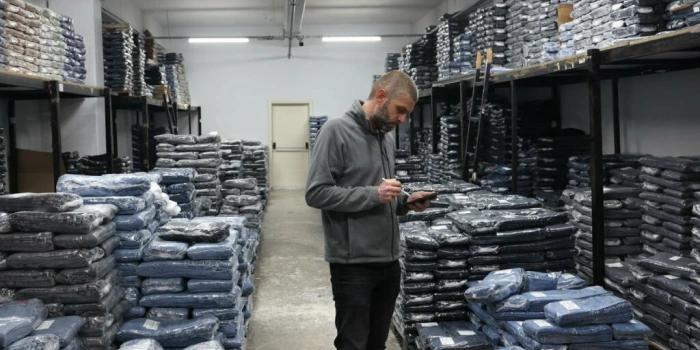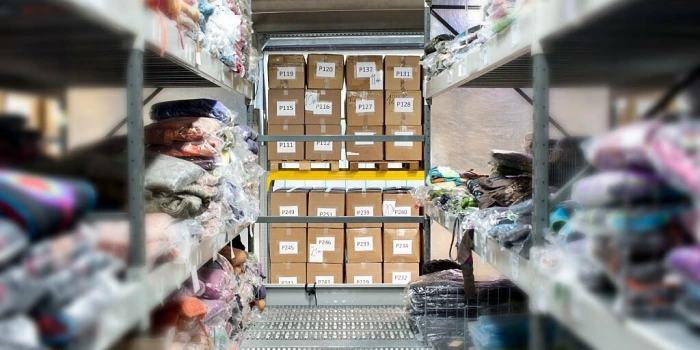Is It OK To Put Clothes in a Storage Unit?

When it comes to decluttering or managing space in our homes, one of the biggest challenges is finding a suitable place to store clothes that are not in regular use.
Whether it's your bulky winter jackets, cherished family heirlooms, or a collection of formal wear, the question arises: Is it okay to put clothes in a storage unit? This guide will delve into the best practices for storing clothes in a storage unit, so that they remain in great condition.
Why Use a Storage Unit for Clothes?
Storage units have become a popular solution for managing space and organizing belongings, and clothes are no exception. Here are some compelling reasons to consider a storage unit for your garments:
- Space Management: Most households struggle with limited storage space. A storage unit can offer the extra square footage you need to comfortably store your off-season or rarely used clothing.
- Seasonal Wardrobe Management: Storage units are ideal for rotating seasonal wardrobes, especially for items like winter coats or summer dresses that take up a lot of closet space.
- Preserving Special Garments: For those with vintage clothing, wedding dresses, or other special garments, a storage unit offers a safe space to preserve these items without them taking up valuable space at home.
Choosing the Right Storage Unit for Clothes
- Size Matters: Consider the amount of clothing and the type of garments when choosing a unit size.
- Climate Control is Key: Fluctuations in temperature and humidity can damage clothing. Opting for a climate-controlled storage unit can prevent mold, mildew, and fabric degradation.

Best Practices for Storing Clothes in a Storage Unit
Clean and Dry
The first step in storing clothes is making sure they’re clean and thoroughly dry. Dirt, oils, and unseen stains can become permanent and even attract pests over time. Clothes should be washed or dry-cleaned according to their care labels. Additionally, make sure the garments are completely dry, as any moisture can lead to mold or mildew growth in storage. This simple yet crucial step ensures that your clothes remain in the best condition for their next use.
Proper Containers
Choosing the right type of container for your clothes can make a significant difference in their preservation. Plastic containers with tight-fitting lids are ideal as they offer protection from pests, dust, and light. These containers also help maintain a stable environment, shielding the clothes from any external humidity changes. It's important to avoid using plastic bags, as these can trap moisture, potentially leading to mold growth. Instead, opt for breathable materials if not using plastic containers, especially for natural fibers like wool or silk.
Avoid Overpacking
It might be tempting to cram as many clothes as possible into a container, but overpacking can lead to wrinkling and fabric damage. Clothes need some room for air circulation, even in storage. It's better to use more containers rather than overstuffing one. Fold clothes neatly, and consider using acid-free tissue paper for delicate items to maintain their shape and prevent creasing.
Use Wardrobe Boxes
For garments that need to retain their shape or are prone to wrinkling, such as formal wear, suits, and dresses, wardrobe boxes are a great option. These boxes come with hanging rods, allowing clothes to hang just as they would in a closet. They provide the dual benefit of keeping clothes wrinkle-free and making them easily accessible. Wardrobe boxes are particularly recommended for long-term storage of high-value items like wedding dresses or tailored suits.
Moth Prevention
One common concern with storing clothes, especially those made of natural fibers, is the risk of moth damage. To prevent this, use natural moth repellents like cedar balls, lavender sachets, or rosemary. These natural options are preferable to chemical mothballs, which can leave a strong odor and are toxic. Place these repellents inside the containers or wardrobe boxes, and remember to replace them periodically for ongoing protection.
Regular Maintenance Checks
Regularly visiting your storage unit to check on your stored clothes is an important aspect of long-term preservation. Here's what you should focus on during these checks:
- Refresh Moth Repellents: Natural moth repellents like cedar balls or lavender sachets are great, but they lose their effectiveness over time. During your maintenance checks, refresh these repellents for protection against moths and other pests. This is especially important for units storing wool, silk, or other natural fibers.
- Reorganize If Necessary: Over time, the arrangement of your storage unit might need adjustment. This could be due to the addition of new items, shifting of boxes, or just to improve accessibility. A regular check provides the opportunity to reorganize.
Storage Solutions with Master Storage 365
Storing clothes in a storage unit can be a fantastic solution to your space problems, provided it's done right. Master Storage 365 makes this easy with our range of large, climate-controlled storage units, designed to keep your treasured garments safe and in excellent condition year-round. Whether you're storing seasonal clothes, special occasion wear, or anything in between, Master Storage 365 has got you covered. Visit us today to find the perfect storage solution for your wardrobe!
